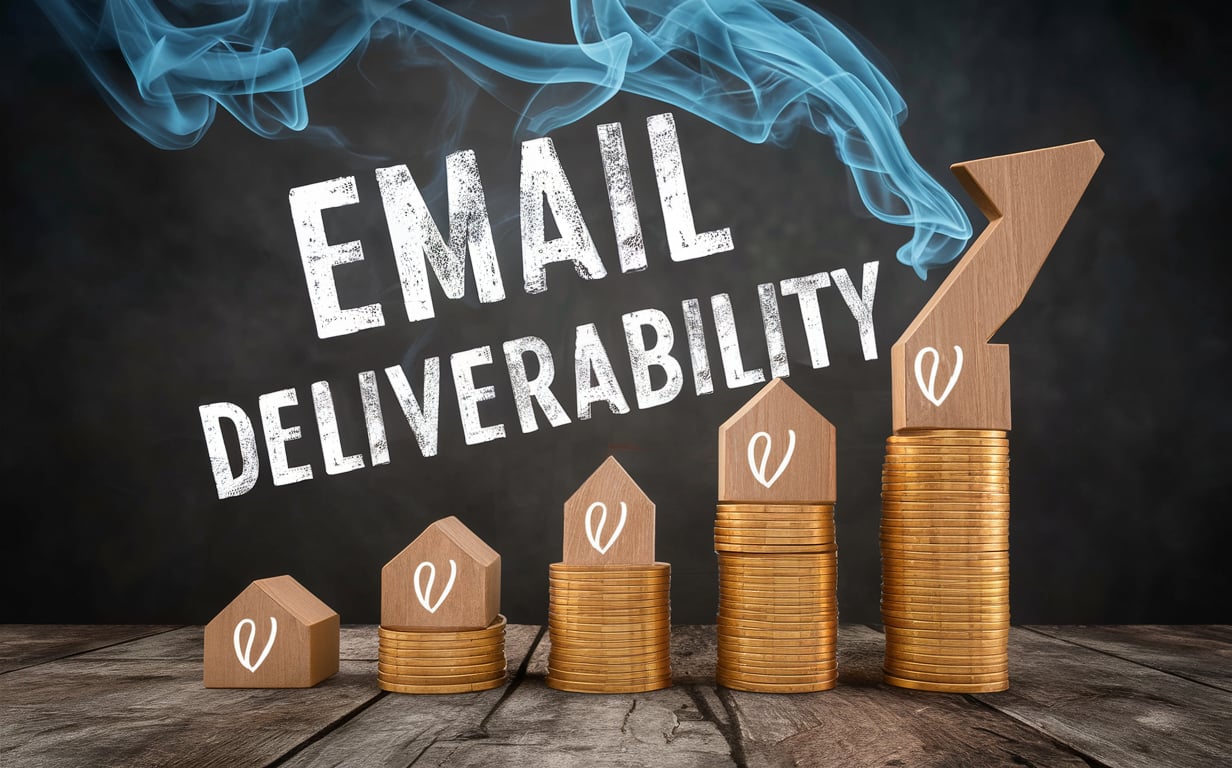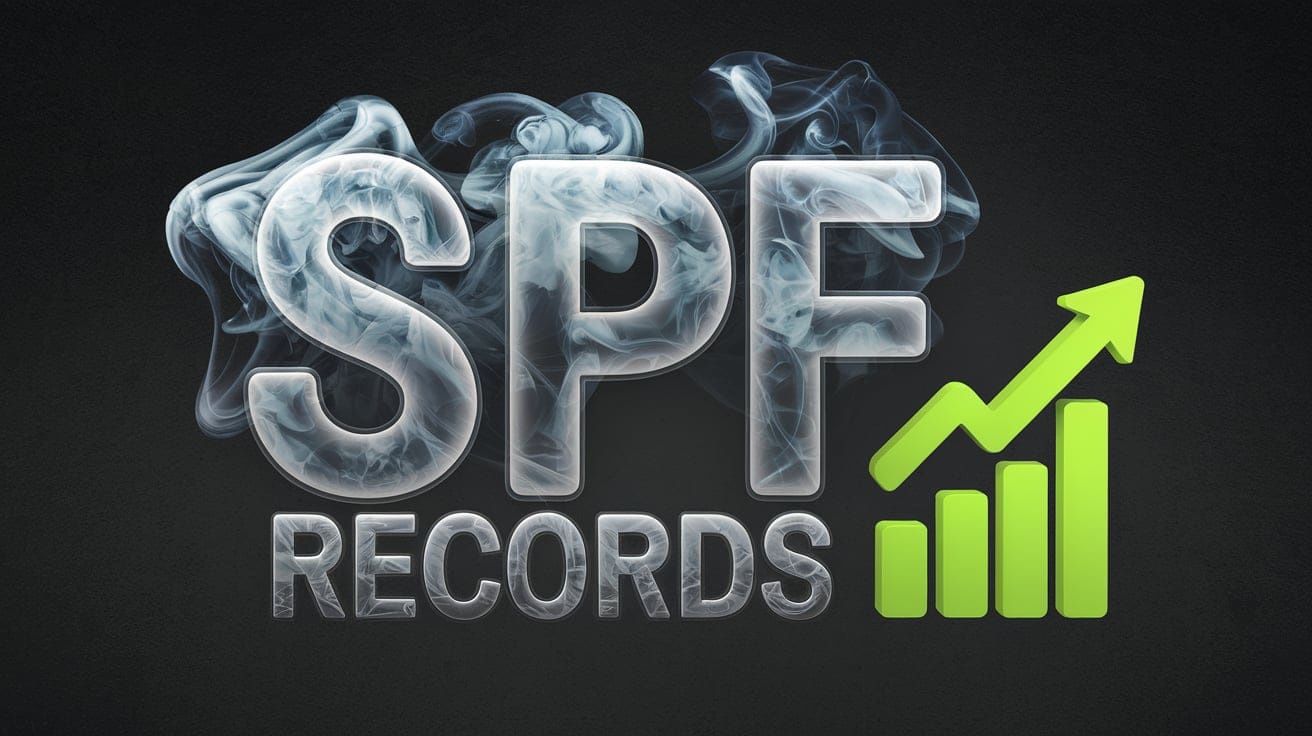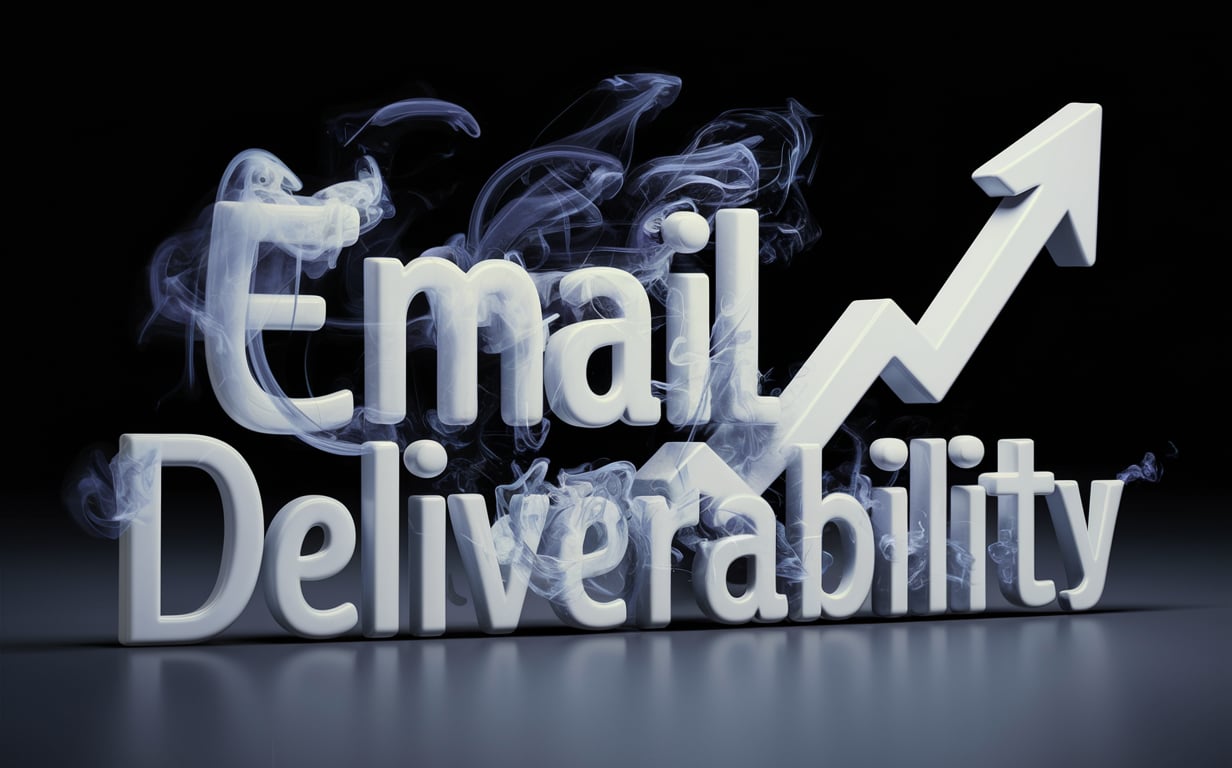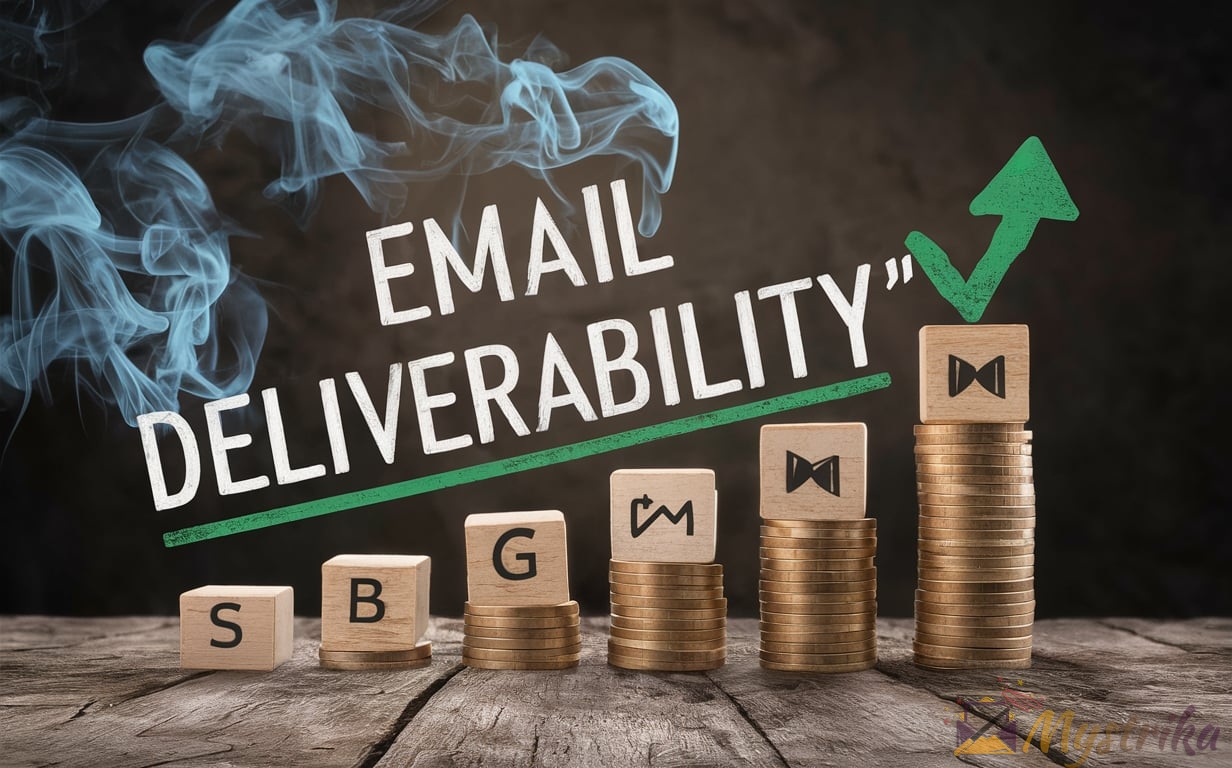Sending emails that reliably land in inboxes is an art and science. Get ready to master both with this comprehensive guide to understanding and optimizing email deliverability.
We’ll explore the vital role of SPF, DKIM, and DMARC authentication. See how to configure them for leading services like DigitalSpace, Klaviyo, and Mailchimp. Troubleshoot problems with Google’s MX diagnostics and more. Then build engagement and trust with responsible sending practices over time.
By the end, you’ll have in-depth knowledge of deliverability along with actionable tips to reach more inboxes. Let’s get started!
Understanding Email Deliverability and Its Importance
Email is a crucial communication channel for businesses today. But with inboxes flooded with promotions and spam, getting your emails delivered successfully is no easy feat. This is where email deliverability comes in – it refers to how reliably your emails reach recipients’ inboxes. High deliverability leads to more opens, clicks, and conversions. On the other hand, poor deliverability results in missed messages, lower engagement, and reduced ROI from email campaigns.
Simply put, email deliverability is make-or-break for your email marketing and outreach efforts. That’s why savvy senders constantly monitor and optimize it. Let’s explore why it matters so much and how you can improve it.
What is email deliverability and why does it matter?
Email deliverability is the percentage of emails sent that arrive in subscribers’ inboxes instead of getting blocked, flagged as spam, or bounced. Multiple complex factors determine whether your email lands safely or not. These include:
- Validity of your sender domain’s IP reputation
- Proper authentication of your sending domain using SPF, DKIM, and DMARC
- Quality and accuracy of your email lists
- Relevance of your email content
- Engagement metrics like open and click-through rates
Deliverability matters because low inbox placement rates severely impact your sender reputation. And poor reputation leads to vicious cycles of worsening deliverability. Worst case, your domain gets blacklisted or blocked entirely.
Other fallouts include:
- Lost opportunities from missed communications
- Lower brand visibility and damaged integrity
- Needless costs from resources spent on blocked or bounced emails
- Reduced ROI from underperforming email campaigns
Maintaining great deliverability takes work but pays dividends over time through higher response rates. Let’s look at how authentication protocols like SPF, DKIM and DMARC help achieve it.
How do SPF, DKIM, and DMARC improve deliverability?
SPF, DKIM, and DMARC work hand-in-hand to builds trust with receiving servers and improve inbox placement rates. Let’s see how each protocol bolsters deliverability:
SPF (Sender Policy Framework) verifies that outgoing emails come from permitted IP addresses authorized by your domain’s administrators. It prevents spoofing and forgery.
DKIM (DomainKeys Identified Mail) cryptographically validates a message’s origin by adding a hashed signature tied to your domain. This confirms the email hasn’t been tampered with.
DMARC (Domain-based Message Authentication, Reporting and Conformance) builds on SPF and DKIM. It aligns authentication mechanisms, sets a policy for unverified emails, and provides delivery reports.
Used together, these protocols confirm your messages’ authenticity and integrity. As a result, receivers authenticate you as a trusted sender and reliably deliver your emails.
Some key benefits that boost deliverability include:
- Stopping spammers from forging your domain in email headers
- Verifying sender identities to build recipient trust
- Ensuring inboxes accurately classify your mail as legitimate
- Gaining visibility from detailed email delivery reports
- Improving placement by satisfying major ISPs’ requirements
- Avoiding penalization for security and standards non-compliance
Now let’s examine the flip side: what happens when deliverability issues arise.
What happens when deliverability fails?
Lackluster deliverability leads to dismaying results:
- Emails land in spam folders instead of recipients’ inboxes. Important messages get missed or overlooked.
- Recipients never receive your email due to blocks or bouncebacks.
- Open and click-through rates decline since fewer subscribers see and interact with your content.
- You’re unable to reliably conduct marketing campaigns or customer outreach. Expected conversions never materialize.
- Blacklisting and blocking of your sending IP addresses or domain, severely interrupting email functionality.
- Reputation damage that makes future emails prone to poor delivery and filtering too.
- Wasted time and money spent on communications that don’t reach your audience.
Frequent bounces and blocks also train ISPs to further distrust your domain. This lowers your sender score, demoting future emails to spam folders automatically.
In summary, poor deliverability creates a downward spiral of damaging outcomes. But you can avoid it through SPF, DKIM and DMARC compliance coupled with ongoing hygiene. Let’s explore how next.

Configuring SPF Records for Top Email Services
SPF authentication is mandatory for reliable email delivery. Let’s see how to configure SPF records for popular email services like DigitalSpace, Klaviyo, and Mailchimp. We’ll also cover key SPF best practices.
Setting up SPF records with DigitalSpace
DigitalSpace offers full-service hosting and email products for businesses. Here are step-by-step instructions to set up SPF records for your DigitalSpace email:
- Log in to your DigitalSpace control panel and navigate to Domain Settings.
- Scroll down to the SPF section and click “Edit SPF Record”.
- In the text box, insert the following SPF syntax:
v=spf1 include:spf.digitalspacemail.net ~all- The “include” tag tells receivers to permit senders listed in DigitalSpace’s SPF record.
- “~all” specifies a soft fail for unknown senders. This avoids hard fails that label legitimate email as spam.
- Click “Set SPF Record” when done. The changes propagate across DNS in 24-48 hours.
- After two days, confirm your updated SPF record using this lookup tool.
With a correct SPF record, DigitalSpace customers vouch for emails from your domain. This boosts deliverability and trust.
Adding Klaviyo to your SPF record
Klaviyo helps ecommerce brands drive more sales through email and SMS marketing automation. Follow these steps to integrate Klaviyo with your SPF record:
- Retrieve your Klaviyo shared IP addresses from the platform’s settings.
- Log into your domain registrar’s DNS control panel.
- Edit the TXT record for SPF configuration.
- Append the Klaviyo IPs, enclosed in square brackets, to your existing SPF rule. For example:
v=spf1 ip4:192.168.1.1 include:spf.klaviyo.com -all- Add the necessary syntax if setting up a new SPF record:
v=spf1 ip4:192.168.1.1 include:spf.klaviyo.com ~all - Save changes and wait up to 48 hours for DNS propagation.
Once updated, your SPF record permits Klaviyo’s IPs for outbound email. This helps legitimate Klaviyo mail avoid spam folders.
Including Mailchimp in your SPF record
Mailchimp is a popular email marketing platform. To authorize Mailchimp servers in your SPF record:
- Get Mailchimp’s sending IP addresses and domains from their SPF help page.
- Log into your domain registrar and navigate to DNS records.
- Edit the TXT entry for your SPF record.
- Add
include:servers.mcsv.netto authorize Mailchimp’s spf.mcsv.net domain. - Insert other Mailchimp domains and IPs as needed. For example:
v=spf1 ip4:123.123.123.123 include:spf.mailchimp.com include:servers.mcsv.net -all- Save changes and let DNS propagate across the internet.
Once Mailchimp is allowed by your SPF record, their emails avoid spam traps and reach subscriber inboxes instead.
SPF guidelines and best practices
When creating SPF records, keep these tips in mind:
- Place only authorized, dedicated IPs and domains in your SPF rule. Avoid wildcards that open your domain to abuse.
- Use “include” instead of “a” tags when possible for better validation.
- Wrap permitted 3rd party IPs in square brackets for regex parsing, as shown above.
- Keep the 10 DNS lookup limit in mind. Excess lookups trigger softfails.
- Avoid unnecessary complexity. Start strict and relax as needed.
- Set “-” for hard fails and “~” for soft fails instead of “?” for unknowns.
- Monitor traffic sources and tighten SPF as you eliminate unused senders.
- Match SPF records on your domain and subdomains to avoid mismatches.
- Use SPF generators to prevent syntax errors. Test any updates before deploying.
- Recheck SPF records when you change infrastructure, vendors, or hosting.
With thoughtful configuration following SPF best practices, you ensure high inbox delivery rates and sender credibility.
Next let’s explore how to activate DKIM signing for your domain.

Enabling DKIM for Your Domain
DKIM digital signatures add authentication to outbound emails. Let’s explore how DKIM works, confirming GoDaddy’s 2048-bit support. We’ll also walk through step-by-step Klaviyo DKIM setup and discuss optimal key lengths.
What is DKIM and how does it work?
DKIM (DomainKeys Identified Mail) lets receiving mail servers validate a message’s origin. It prevents tampering and forgery.
Here’s how DKIM works:
- The sending server creates a public-private key pair and publishes the public key in the domain’s DNS records.
- The private key remains confidential and is used to create email signatures.
- When an email is sent, the sending server hashes parts of the message like the headers and body.
- It encrypts the resulting hash with the private key to generate a digital signature.
- This signature gets added to the email’s headers as a DKIM identifier.
- The receiving server uses the public key to decrypt the signature attached to the incoming email.
- It recalculates the hash locally and compares it against the decrypted value. If the two hashes match, the email’s authenticity is verified.
This validation process happens in the background in milliseconds, invisibly to recipients. But DKIM signatures add essential trust and legitimacy. Next, let’s clear up some confusion around supported key lengths.
Does GoDaddy support 2048-bit DKIM?
Many major email providers like Gmail require 2048-bit DKIM keys for secure authentication. So a common question is: does GoDaddy support 2048-bit DKIM records?
The short answer is yes. GoDaddy has supported 2048-bit key lengths for DKIM since 2013.
When setting up DKIM through GoDaddy’s interface, you can select 2048-bit as the key size. Their published guides also provide instructions for 2048-bit keys.
Other registrars like Namecheap, Bluehost, HostGator, and Cloudflare similarly all allow 2048-bit DKIM keys.
In summary, all major domain providers have 2048-bit DKIM functionality built-in for optimal security.
Step-by-step Klaviyo DKIM setup
Klaviyo helps configure DKIM behind the scenes when you connect your domain. But you can also set up DKIM manually. Here are the steps:
- In Klaviyo, go to Settings > Domains and generate a new domain key.
- Copy the TXT record containing your public key, selector, and notes.
- Login to your DNS provider and create a TXT record. Paste the value from Klaviyo.
- Repeat steps 2 and 3 for a second TXT entry using the next public key from Klaviyo.
- Save your DKIM records and allow up to 48 hours for propagation.
- Click “Verify Domain” in Klaviyo and ensure your DKIM status shows as verified.
Following these steps correctly associates your domain identity with Klaviyo-sent mail. Authentication works seamlessly from then on.
DKIM key length – 1024 vs 2048 bit
Larger DKIM key lengths improve security against cryptanalysis attacks attempting to crack signatures.
1024-bit keys are the bare minimum and provide baseline security. However, 2048-bit is recommended and widely adopted.
The differences include:
- 2048-bit keys offer exponentially more combinations, making decoding infeasible without the private key.
- Security experts suggest 2048-bit provides adequate protection beyond 2030.
- Major email providers like Gmail mandate 2048-bit keys for authentication.
- 2048-bit DKIM aligns with the current SHA256 hashing algorithm standard.
- There’s minimal overhead for 2048-bit over 1024-bit when generating and transmitting keys.
In summary, 2048-bit DKIM keys provide future-proof security and maximizes deliverability by satisfying vendors’ requirements. They are widely supported and recommended over 1024-bit.
With your domain’s DKIM records properly configured, your email integrity and sender reputation both get a boost. Next let’s explore Google’s suite of troubleshooting tools.

Leveraging Google MX Tools for Troubleshooting
Google offers an excellent suite of free tools for diagnosing email delivery issues. Let’s explore how Google’s MX lookup, troubleshooters, and other utilities can pinpoint problems.
Using Google MX lookup to validate records
When emails stop arriving, invalid MX records are a common culprit. Google’s MX lookup tool lets you quickly validate your mail exchange records.
To use it:
- Go to the MX Lookup tool on the Google Admintoolbox site.
- Enter your domain name without the www prefix.
- Click “MX Lookup”.
This fetches the MX records for your domain and displays details including:
- The mail servers designated for your domain
- Each server’s priority value
- Corresponding IP addresses
You can compare this output against recommended MX records for Google Workplace published here.
If any discrepancies are found, follow your domain host’s steps to fix the records. Retest after 24-48 hours for the changes to propagate across DNS.
Troubleshooting deliverability issues with Google tools
Google provides other handy tools that provide insights when diagnosing deliverability problems:
- Check MX Tool – Validates your MX records and identifies any configuration issues.
- Message Header Analyzer – Checks email headers to confirm successful authentication and track routing hops.
- SMTP Test Tool – Tests your SMTP setup and delivers a test email for diagnosis.
- Email Log Search – Searches and exports email delivery logs to identify failure trends.
- Email Routing Tool – Traces email flow via Google systems to spot filtering issues.
These utilities help pinpoint where deliverability problems originate whether it’s invalid SPF/DKIM records, faulty configurations, or replicable filtering by Google itself.
Google Apps mail troubleshooter for diagnosing problems
For Google Workspace users, the admin console has an integrated troubleshooter focused on email delivery issues like missing messages, formatting problems, and more.
Access it from the Admin console under Apps > Gmail > Troubleshooter. Or use the direct troubleshooter link.
The interactive tool asks diagnostic questions about the problem you’re facing. Based on your responses, it provides fixes or escalates the issue to Google support.
This guided email troubleshooting makes light work of diagnosing tricky delivery issues caused by Google Workspace configuration quirks or backend filtering.
In summary, Google offers indispensable utilities for identifying the root of email delivery problems – an essential first step before improvements can occur. We’ll cover such enhancements next.

Monitoring and Improving Deliverability
Configuring SPF, DKIM, and DMARC lays the foundation for deliverability. But ongoing reputation monitoring and hygiene is essential for further optimization. Let’s explore key strategies for continual inbox placement improvements.
Tools for checking email reputation
To catch deliverability issues early, monitor your domain and IP reputations using:
- MXToolbox Blacklist Check – Tests email sender reputation against over 100 DNS blacklists.
- OptinMonster Reputation Score – Grades your domain’s trust factor for identifying risks.
- Symantec IP Reputation – Looks up security vendorblacklists for your sending IPs.
- MultiRBL.valli.org – Checks IPs against over 40 real-time DNSBLs at once.
- Talos Reputation Center – Cisco email security blacklist monitoring.
Regular reputation checks identify issues early before impacting deliverability further. Proactively fix identified problems.
Building your sender reputation over time
Beyond SPF, DKIM, and DMARC, your domain and IP reputations depend on user engagement and compliant mailing practices. Boost your reputation through:
- Double opt-in email signups to show subscribers want your mail. Avoid purchased or harvested lists.
- Segment subscribers and only send relevant, expected content they’ll appreciate.
- Encourage recipients to add your email to contacts and regularly engage with content.
- Keep below 2% hard bounces and 5% complaints based on ISP thresholds.
- Check bounces and remove invalid addresses promptly from your lists.
- Provide easy unsubscribe options and respect opt-out requests immediately.
- Send at regular intervals but avoid sudden large volume spikes.
- Use a dedicated IP for your email campaigns and safeguard its reputation.
With nurtured engagement and responsible sending practices, your domain builds a trustworthy reputation resulting in high inbox placement and deliverability.
Handling bounces and optimizing your signup flow
Unengaged subscribers and excessive bounces hurt your sender score. Optimize signup and implement bounce management:
- When possible, use confirmed opt-in requiring the recipient to click a link in a confirmation email. This filters fake addresses submitted through web forms.
- Send a double opt-in welcome message and discard signups if not confirmed.
- Closely track hard and soft bounce rates with tools like Mailchimp. Identify and fix causes of transient bounces.
- Remove non-working email addresses that continually bounce or remain inactive.
- Use services like SendGrid or SparkPost for bounce processing and compliance.
- Suppress non-openers from future sends until they show renewed engagement.
Properly handling bounces protects your sender rating and keeps lists clean for improving future deliverability.
Ongoing list hygiene and compliance best practices
Maintaining your email list is vital for optimal performance. Follow these list hygiene practices:
- Regularly re-engage inactive subscribers and prune non-responders.
- Avoid purchased, rented, or harvested lists which harm deliverability.
- Confirm compliance with anti-spam laws like CAN-SPAM with compliance tools.
- Honor unsubscribe requests instantly and keep suppression lists up to date.
- Keep user data secure following protocols like GDPR.
- Update subscriber preferences and promptly deliver content they expect.
- Send segmented, personalized content focused on user interests.
- Monitor engagement metrics like open, clickthrough, and conversion rates.
List hygiene takes constant vigilance but pays off through better delivery, compliance, and increased ROI from email campaigns.
In summary, monitoring and incremental optimization is crucial for maintaining great deliverability in the long run.
Now let’s wrap up with some key takeaways.

Key Takeaways for Mastering Email Deliverability
Optimizing your email deliverability takes effort but brings tremendous rewards. Here are the key lessons:
- Enable SPF, DKIM, and DMARC for your domain to authenticate as a trusted sender. Follow setup guides specific to your email services.
- Include all sending IPs and third-party domains properly in your SPF records. syntax like “include:domain.com” handles this well.
- Add 2048-bit DKIM public keys in DNS for stronger security that services like Gmail require.
- Use Google’s toolbox for troubleshooting deliverability problems like invalid DNS records.
- Monitor your domain and IP reputations with blacklist checks to catch issues early.
- Build your sender reputation over time through engaged subscribers and responsible sending practices.
- Handle bounces aggressively, follow opt-out requests promptly, and keep lists clean.
- Send relevant content subscribers want at regular intervals while avoiding massive spikes in volume.
- Follow best practices around confirmation messages, segmentation, compliance, security, and personalization.
With these tips, you can confidently tackle deliverability challenges. SPF, DKIM, and DMARC will mitigate spoofing and forgery while your domain reputation will flourish. As a result, your mailbox placement rates will continue trending upward over time.
Frequently Asked Questions
Let’s review some common FAQs around optimizing email deliverability:
Q: What are the most important things I can do to improve deliverability?
A: Enable SPF, DKIM, and DMARC for starter-level authentication. Then monitor your reputation, handle bounces swiftly, honor unsubscribes, and keep your lists clean. Sending focused content subscribers want also boosts engagement.
Q: How quickly do DNS changes propagate for SPF/DKIM/DMARC?
A: It takes 24-48 hours for global DNS propagation typically when making changes. Use online DNS tools to check records have updated worldwide.
Q: What’s the difference between a hard vs soft email bounce?
A: Hard bounces indicate a permanent delivery failure like a non-existent mailbox. Soft bounces are temporary and can be resolved by resending later. Too many hard bounces hurt your sender reputation.
Q: What blacklist check tools do you recommend?
A: MXToolbox, Talos Reputation Center, and MultiRBL are solid options. Check your domain and IP reputations weekly to detect issues early.
Q: How often should I clean my email subscriber list?
A: Best practice is to scrub your lists weekly at minimum. Prune hard bounces, spam complaints, non-engaged subscribers, and opt-outs regularly.
Q: What’s an optimal sending frequency and volume for good deliverability?
A: 2-5 emails per week is a reasonable cadence. For volumes, ramp up gradually while staying under 50k emails per IP daily when starting out.
Q: Is buying email lists a good idea if I’m just starting out?
A: No – purchased lists harm deliverability and reputation. Take the time to build your own engaged subscriber list instead.
Q: What’s the best way to confirm new double opt-in subscribers?
A: Send a separate confirmation email when users sign up, requiring them to click a verification link before being added.
Q: How can I tell if my DKIM and SPF records are set up properly?
A: Use online tools like MXtoolbox to validate your DNS records. For DKIM specifically, send test emails and check headers.

